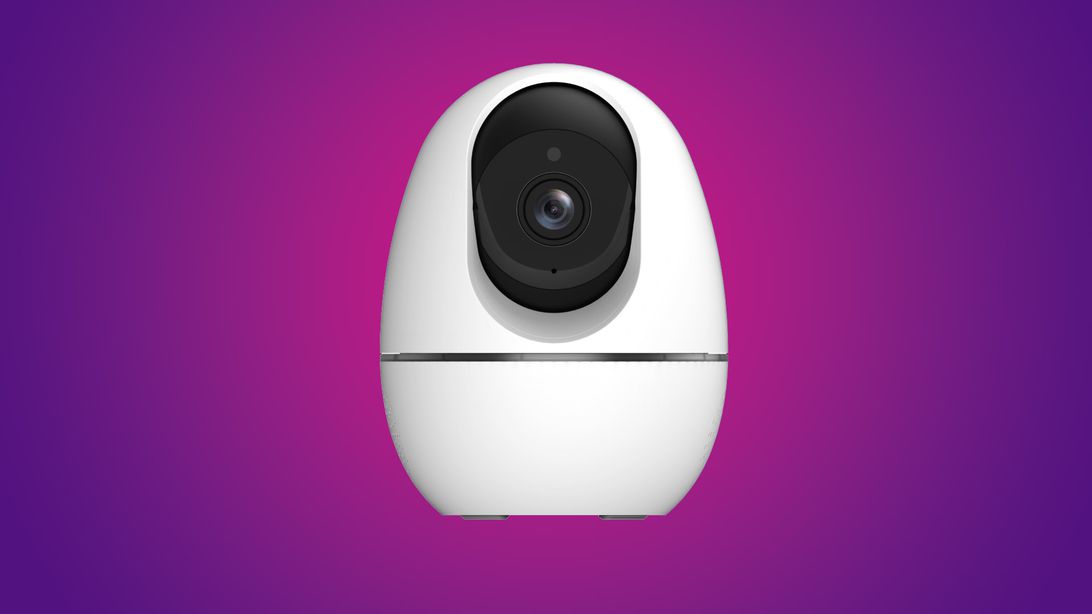 Archos plans to release a security cam that, thanks to Ossia longer-range wireless power, has no wires.
Archos plans to release a security cam that, thanks to Ossia longer-range wireless power, has no wires.
After years of promises, promotion and development, technology that can charge devices from across the room or through walls is coming to market.
Ossia and Energous, both proponents of the nascent technology, used CES 2022 to show off new products that'll keep security cameras, smart doorbells, hearing aids and similar products continually charged while eliminating cables or charging pads.
Cota, a wireless charging technology developed by Ossia, will start appearing in products from French electronics maker Archos later this year, Ossia Chief Executive Doug Stovall said this week in an interview from the CES show floor in Las Vegas. Products sporting Cota will include an entirely wireless security camera, an air monitoring sensor and a pet tracker due to arrive in stores this year. Archos hasn't revealed prices yet.
Stovall hinted that another Ossia partner -- "think large furniture companies based in Scandinavia" -- is working on commercializing its Cota Power Table, which uses Ossia's technology to beam power from the ceiling to conventional phone-charging pads. The table could be useful at businesses such as coffee shops, allowing customers to power up without plugging in.
Energous displayed a host of devices that use its WattUp charging technology, which also beams juice across a room. The products include EarTechnic hearing aids, Gokhale PostureTracker medical monitors and Williot smart tracking tags. Energous didn't reveal prices and availability.
The rollout of products using Ossia's and Energous' technologies highlights the maturation of charging systems that don't require a physical connection to a power source. Longer-range wireless charging technology, like Cota and WattUp, sends beams of radio energy to devices that need modest amounts of power and that are within several feet of the transmitter. Even though it isn't powerful enough to juice a laptop or TV, the technology has the potential to make it easier to charge the growing number of lower-power smart home and internet of things devices in homes, offices, stores and factories.
"If you have smart locks, Ring-style doorbells and other cameras for security or baby monitors, it starts adding up," Stovall said. "Suddenly you need to start worrying about how you keep these devices alive."
The Ossia and Energous technologies detect devices and establish direct connections for higher power and greater efficiency. Ossia also offers software that governs which devices have permission to charge, so customers don't have to worry about neighbors poaching their radio waves.
Another company, Powercast, is using radio energy to power in-store electronic price labels that autonomous, aisle-roaming robots built by Badger Technologies can read to monitor stock levels. Powercast also has consumer products in mind, as evidenced by University of Arizona researchers building Powercast-enabled medical sensors, which were displayed at CES.
Unlike short range wireless charging, which uses the Qi standard and requires devices to perch on a charging pad, longer range wireless is still a battle between proprietary technologies. In addition to Ossia, Powercast and Energous, start-up GuRu Wireless is also a contender. Short range charging took off in earnest only after the industry settled on a single standard.
One barrier to getting long range charging in homes and businesses is cost. Charging transmitters, which beam power to devices, run between $200 and $300 for Ossia's technology. Ossia's receiving antennas and electronics, which add support to devices with the technology, add between $1 and $8, depending on the power rating and other factors. (Some of that cost is offset by eliminating conventional power electronics.)
There's also a size tradeoff. Miniaturization is nice, but larger transmitting and receiving antennas can beam more power. Cota works on devices as small as a AA battery.
Ossia's initial charging transmitter is a panel about 2 feet square (60 centimeters) that fits in a ceiling panel. At CES, Ossia showed off two smaller panels under development, one 40 by 40 centimeters and the other 30 by 30 centimeters. The smaller model could plug straight into a wall outlet or fit into a smart speaker, but smaller sizes have shorter range.
Different varieties of longer range wireless charging are arriving, too. Startup WiTricity hopes electric-vehicle makers will adopt its wireless charging technology, turning parking spots, loading docks and even roadways into power sources. At CES, Samsung announced a TV remote control that charges off ambient radio waves, one example of a technology called energy harvesting.
